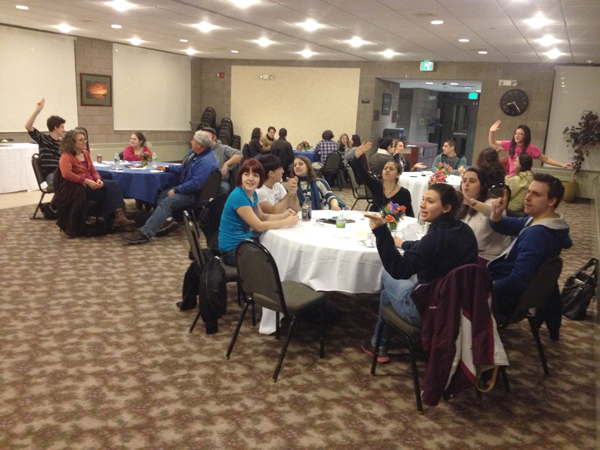
The Communication and Media Society held their annual Communication and Media Week, providing students interested in the professional field of communication with opportunities to view a film screening, play trivia and network with alumni on Tuesday, March 19 through Thursday, March 21.
Communication and Media Society encourages all majors within the department to collaborate and plans trips to expose students to careers within the field, from NBC Studios to the set of the Jerry Springer show, Assistant Professor of Media Gregg Bray said.
Bray said Communication and Media Week is their most visible event, including the “staple” events of an alumni panel and a keynote speaker, along with a documentary screening and trivia night.
The week, which is normally held in April and is usually at least four days long, was shortened this year due to the scheduling before spring break, Communication and Media Society President Alex Fontanez said.
On Tuesday at 10 a.m., six alums, including Production Coordinator for the “Real Housewives of Miami” Deanna DiBenedetto and radio personality John Mingione, spoke at a panel in Student Union (SU) 62/63.
The event also featured recent alum Kristina Cartwright, a traffic reporter for News Channel 12, who Fontanez said she saw in classes a few years ago and has since then watched on television.
Bray said the panel showed students ways to transition from a college environment to the professional world, adding that it’s the event he looks forward to most because he has the opportunity to reconnect with former students.
Tuesday night, SUNY New Paltz Lecturer Daniel Hunt’s documentary “Cruel and Unusual” was screened in Lecture Center (LC) 102 at 6 p.m.
“Cruel and Unusual” examines the lives of transgender women incarcerated in male prisons. Hunt, a prize-winning producer and director, has received four awards for the film, part of the reason Bray said the club was interested in screening his work.
Following the screening was a question and answer section with sociology Professors Karl Bryant and Alexandra Cox to discuss the film’s content and the social responsibilities associated with it, Bray said.
“From a documentarian viewpoint, the film is very interesting,” Fontanez, a third-year radio and television production major said. “But to also gain a sociologist’s perspective will enlighten viewers more and provide a dichotomy of perspectives.”
Wednesday, there was a team trivia night at 7:30 p.m. at the College Terrace with a suggested $5 donation. Proceeds went toward the Daniel Schackman Memorial Student Travel Fund to benefit students who are traveling to present research at conferences and events.
Schackman, an assistant professor in the Communication and Media Department who died in November of 2011, was a “trivia whiz,” according to Bray. Before his death, he won a trivia award with Bray and Assistant Professor of communication Elizabeth Munz, a faculty adviser. After the celebration, the three professors agreed to use their leftover winnings to start a travel fund for students. This is the first year students are eligible to use the funds for travel.
On Thursday night, the second staple of the week will happen— the keynote speaker. Media branding strategist Lee Hunt will speak at the College Terrace. Hunt, who has helped rebrand channels NBC, ABC, Lifetime and VH1, will discuss how branding is changing today and how students can learn to brand themselves, according to the club’s Vice President Miriam Ward.
In the future, Fontanez said she would love to host a communication and media week with another club, suggesting the Theater Department as a possibility. But for this year’s event, she said she hopes participants found the events worth attending.
Now with about 40 members and an all-female E-board, the Communication and Media Society members make decisions independently, with little guidance from Bray or Munz.
“In the early days, I would fire off suggestions to the group, and in the past couple years, Elizabeth and I will usually show up to a couple meetings at the beginning,” Bray said. “It used to be me and five students in a room trying to figure out what we were doing.”

